Kidney Stones Kim Applebee Alex Kaullen Definition Kidney

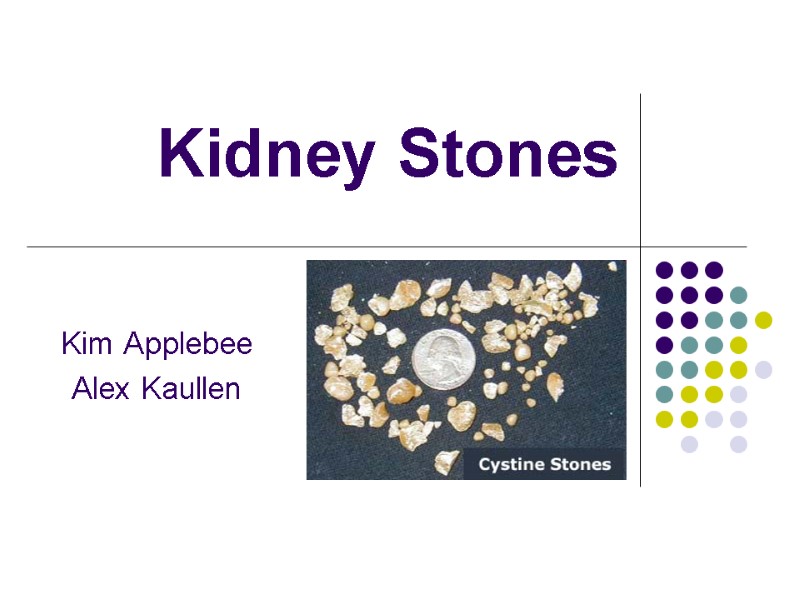
Kidney Stones Kim Applebee Alex Kaullen
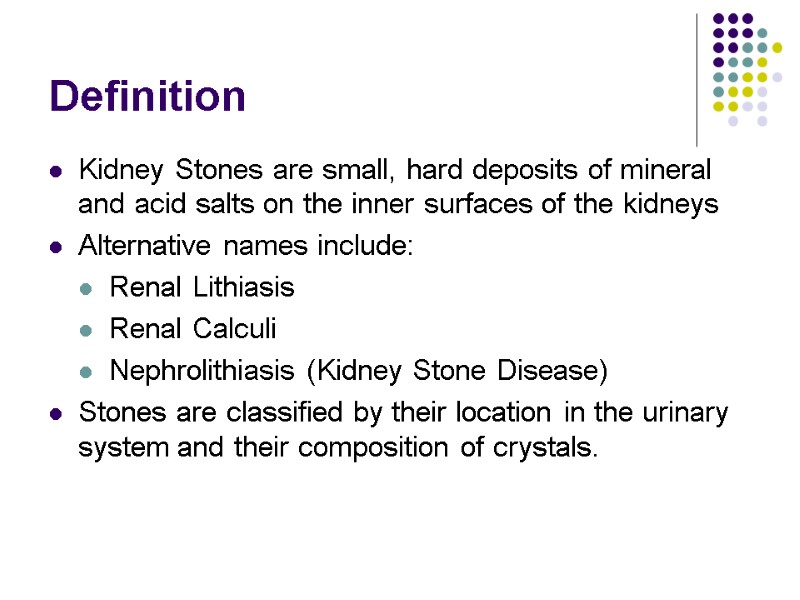
Definition Kidney Stones are small, hard deposits of mineral and acid salts on the inner surfaces of the kidneys Alternative names include: Renal Lithiasis Renal Calculi Nephrolithiasis (Kidney Stone Disease) Stones are classified by their location in the urinary system and their composition of crystals.
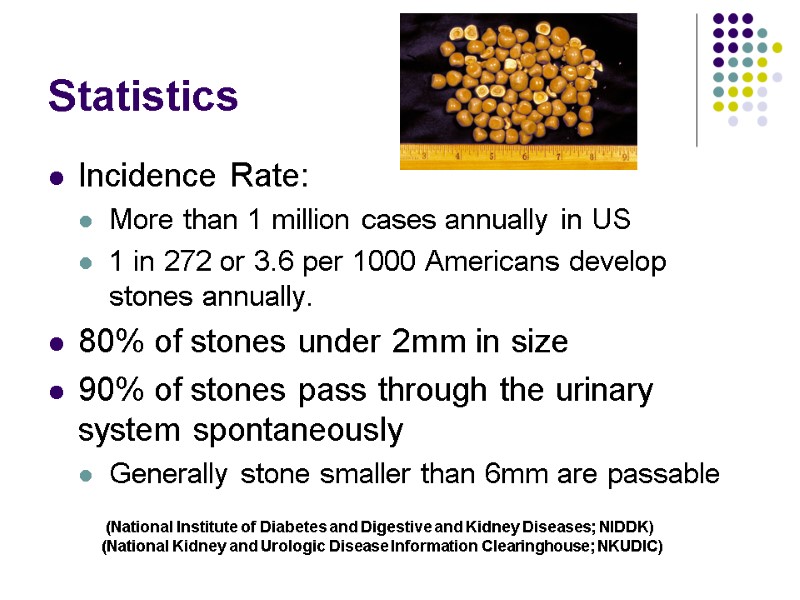
Statistics Incidence Rate: More than 1 million cases annually in US 1 in 272 or 3.6 per 1000 Americans develop stones annually. 80% of stones under 2mm in size 90% of stones pass through the urinary system spontaneously Generally stone smaller than 6mm are passable (National Institute of Diabetes and Digestive and Kidney Diseases; NIDDK) (National Kidney and Urologic Disease Information Clearinghouse; NKUDIC)
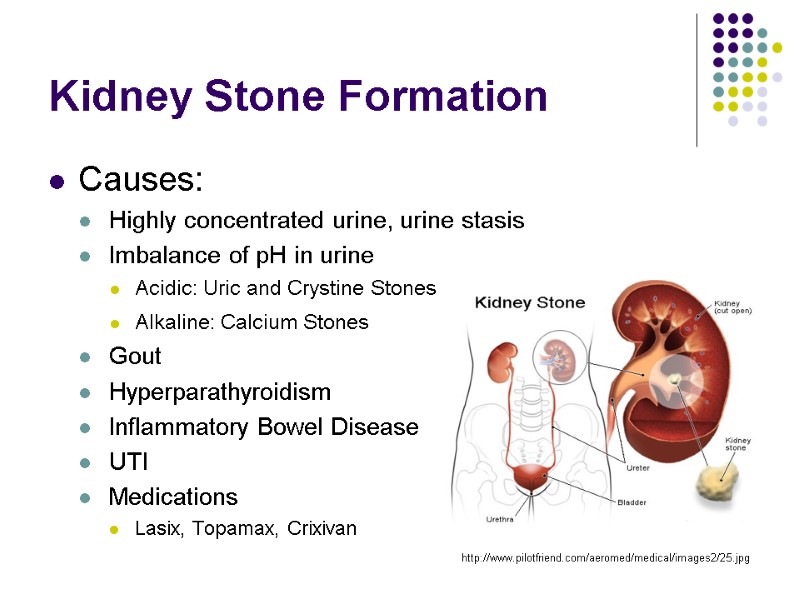
Kidney Stone Formation Causes: Highly concentrated urine, urine stasis Imbalance of pH in urine Acidic: Uric and Crystine Stones Alkaline: Calcium Stones Gout Hyperparathyroidism Inflammatory Bowel Disease UTI Medications Lasix, Topamax, Crixivan http://www.pilotfriend.com/aeromed/medical/images2/25.jpg
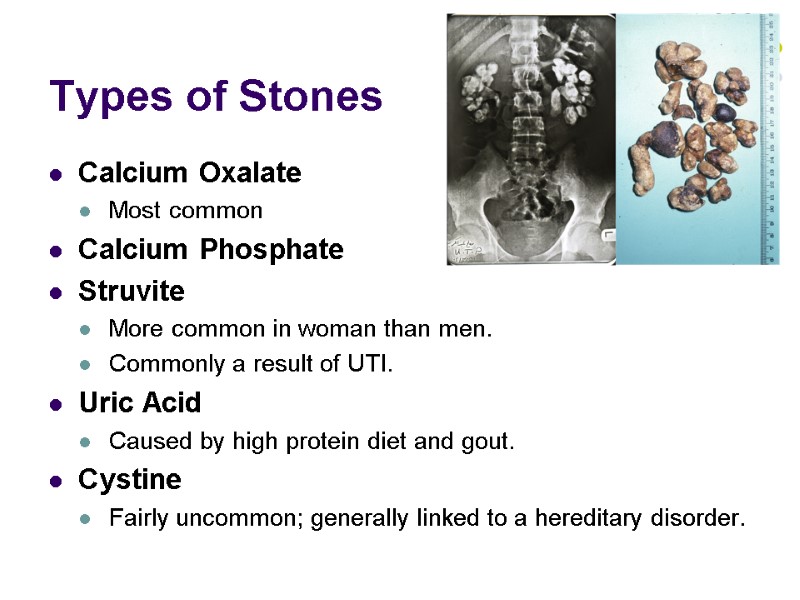
Types of Stones Calcium Oxalate Most common Calcium Phosphate Struvite More common in woman than men. Commonly a result of UTI. Uric Acid Caused by high protein diet and gout. Cystine Fairly uncommon; generally linked to a hereditary disorder.
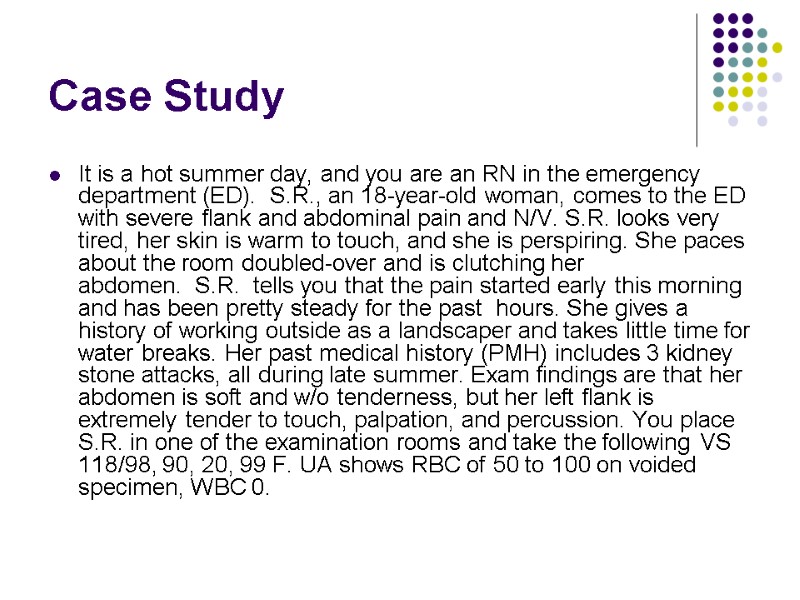
Case Study It is a hot summer day, and you are an RN in the emergency department (ED). S.R., an 18-year-old woman, comes to the ED with severe flank and abdominal pain and N/V. S.R. looks very tired, her skin is warm to touch, and she is perspiring. She paces about the room doubled-over and is clutching her abdomen. S.R. tells you that the pain started early this morning and has been pretty steady for the past hours. She gives a history of working outside as a landscaper and takes little time for water breaks. Her past medical history (PMH) includes 3 kidney stone attacks, all during late summer. Exam findings are that her abdomen is soft and w/o tenderness, but her left flank is extremely tender to touch, palpation, and percussion. You place S.R. in one of the examination rooms and take the following VS 118/98, 90, 20, 99 F. UA shows RBC of 50 to 100 on voided specimen, WBC 0.

What key factors are important to consider?
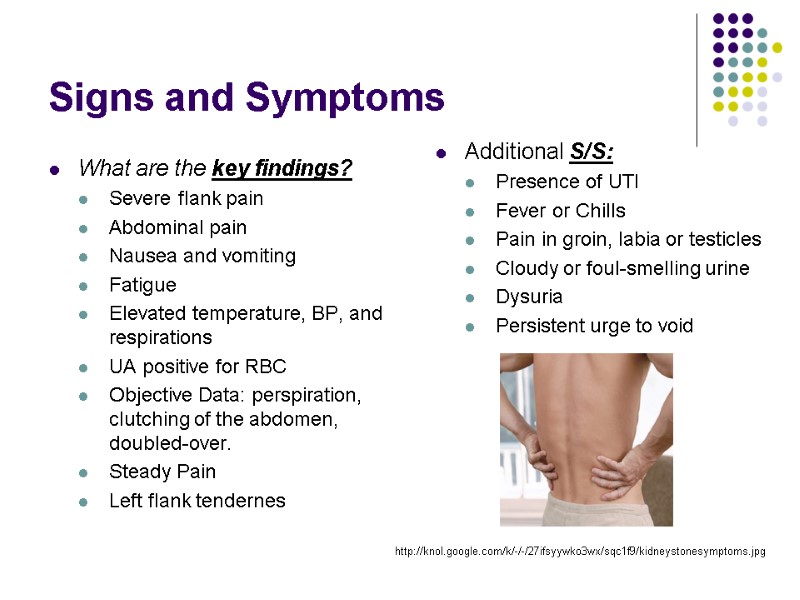
Signs and Symptoms What are the key findings? Severe flank pain Abdominal pain Nausea and vomiting Fatigue Elevated temperature, BP, and respirations UA positive for RBC Objective Data: perspiration, clutching of the abdomen, doubled-over. Steady Pain Left flank tendernes Additional S/S: Presence of UTI Fever or Chills Pain in groin, labia or testicles Cloudy or foul-smelling urine Dysuria Persistent urge to void http://knol.google.com/k/-/-/27ifsyywko3wx/sqc1f9/kidneystonesymptoms.jpg
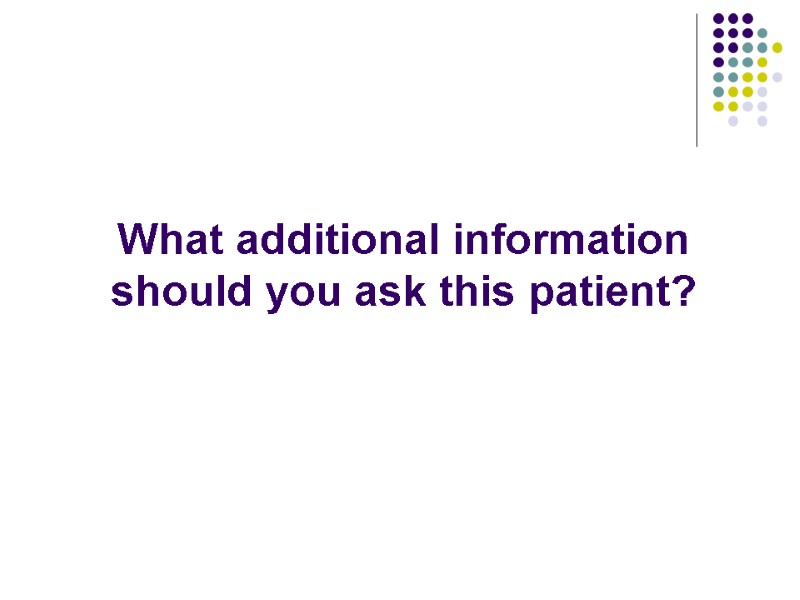
What additional information should you ask this patient?
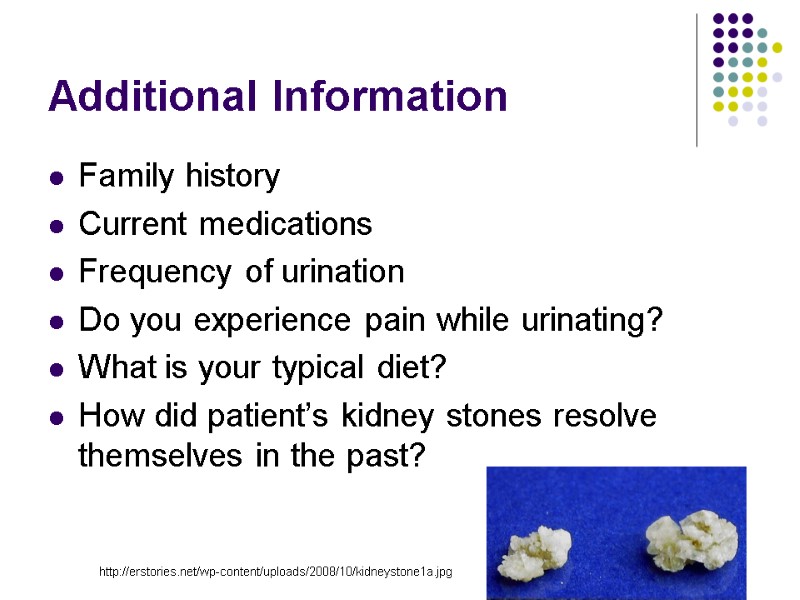
Additional Information Family history Current medications Frequency of urination Do you experience pain while urinating? What is your typical diet? How did patient’s kidney stones resolve themselves in the past? http://erstories.net/wp-content/uploads/2008/10/kidneystone1a.jpg
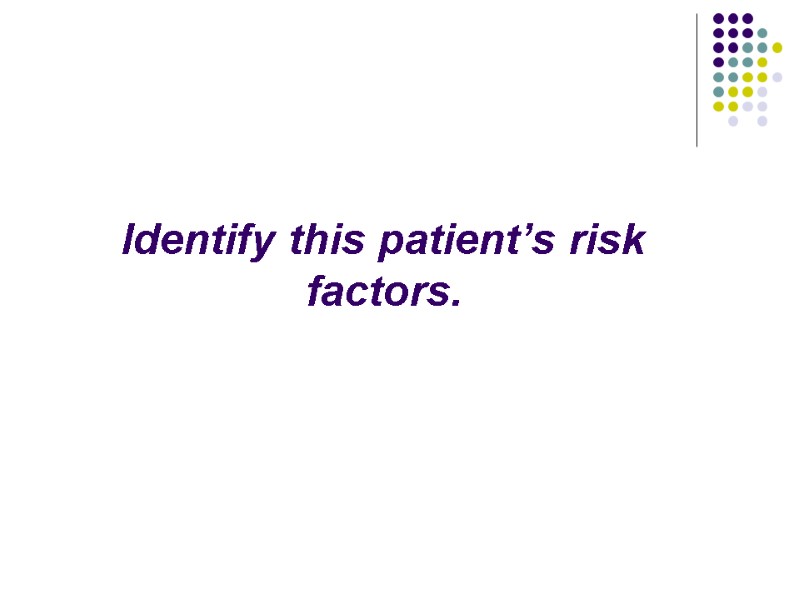
Identify this patient’s risk factors.

Risk Factors What are her risk factors? Past Medical History Hx of 3 kidney stone attacks Dehydration/Lack of Fluids Occupational exposure Labor Intensive Outdoors Weather/Climate Hot, dry Additional risk factors: Family or Personal Hx Gender (male) Age (20-55) Race (Caucasian) Diet High sodium High protein Food high in oxalate Vit A/D, grapefruit juice Sedentary Lifestyle Obesity High Blood Pressure http://savethelobsters.files.wordpress.com/2009/02/ist2_4588664_half_empty_glass_of_water_with_clipping_path.jpg
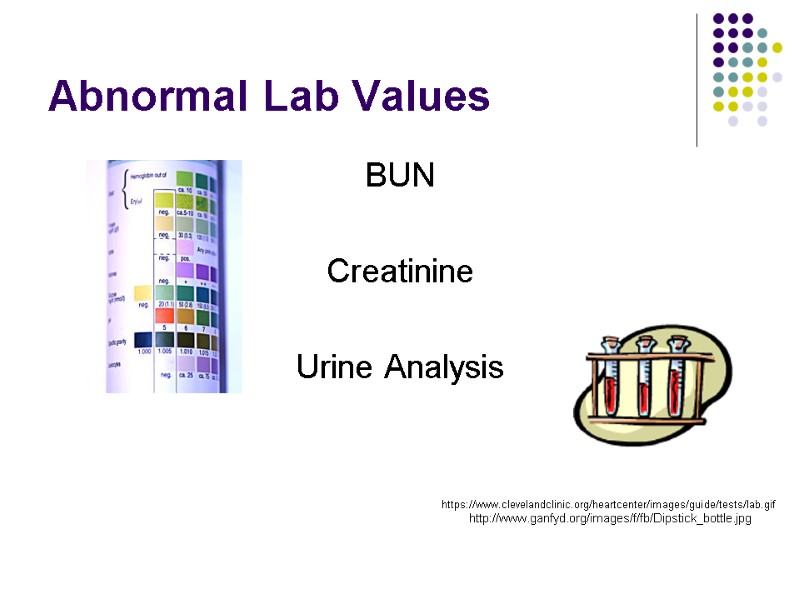
Abnormal Lab Values BUN Creatinine Urine Analysis https://www.clevelandclinic.org/heartcenter/images/guide/tests/lab.gif http://www.ganfyd.org/images/f/fb/Dipstick_bottle.jpg
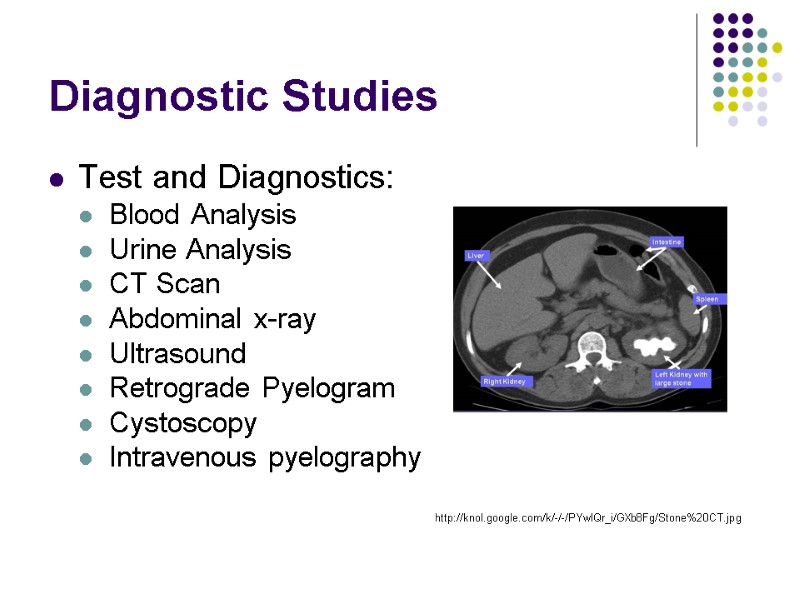
Diagnostic Studies Test and Diagnostics: Blood Analysis Urine Analysis CT Scan Abdominal x-ray Ultrasound Retrograde Pyelogram Cystoscopy Intravenous pyelography http://knol.google.com/k/-/-/PYwIQr_i/GXb8Fg/Stone%20CT.jpg

What questions do you need to ask before a patient has an IV pyelogram?
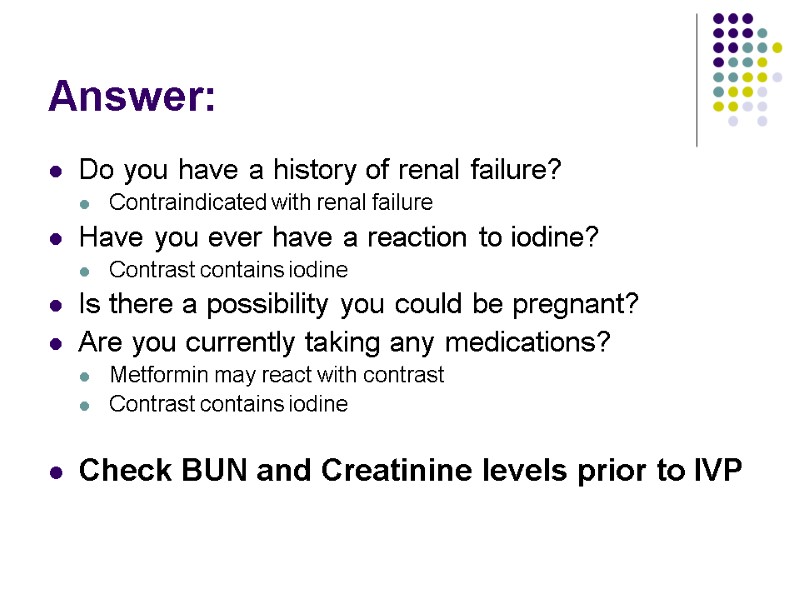
Answer: Do you have a history of renal failure? Contraindicated with renal failure Have you ever have a reaction to iodine? Contrast contains iodine Is there a possibility you could be pregnant? Are you currently taking any medications? Metformin may react with contrast Contrast contains iodine Check BUN and Creatinine levels prior to IVP
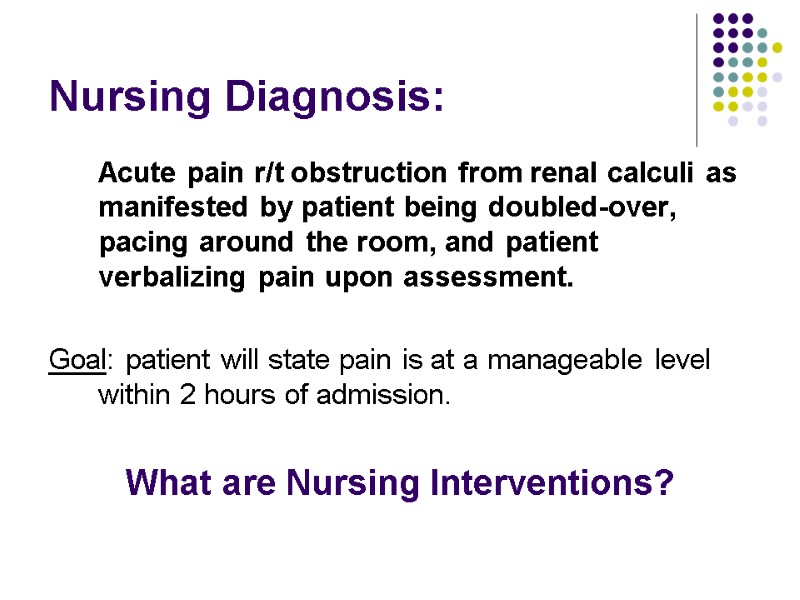
Nursing Diagnosis: Acute pain r/t obstruction from renal calculi as manifested by patient being doubled-over, pacing around the room, and patient verbalizing pain upon assessment. Goal: patient will state pain is at a manageable level within 2 hours of admission. What are Nursing Interventions?
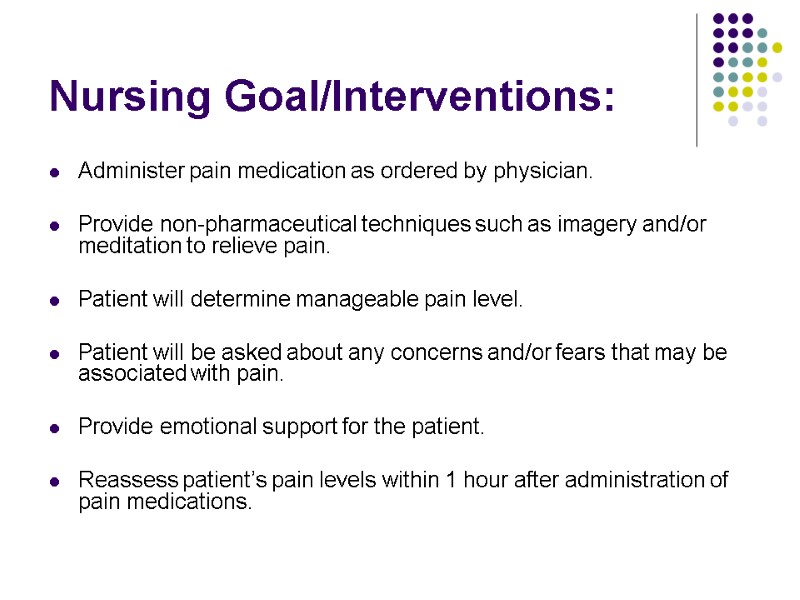
Nursing Goal/Interventions: Administer pain medication as ordered by physician. Provide non-pharmaceutical techniques such as imagery and/or meditation to relieve pain. Patient will determine manageable pain level. Patient will be asked about any concerns and/or fears that may be associated with pain. Provide emotional support for the patient. Reassess patient’s pain levels within 1 hour after administration of pain medications.
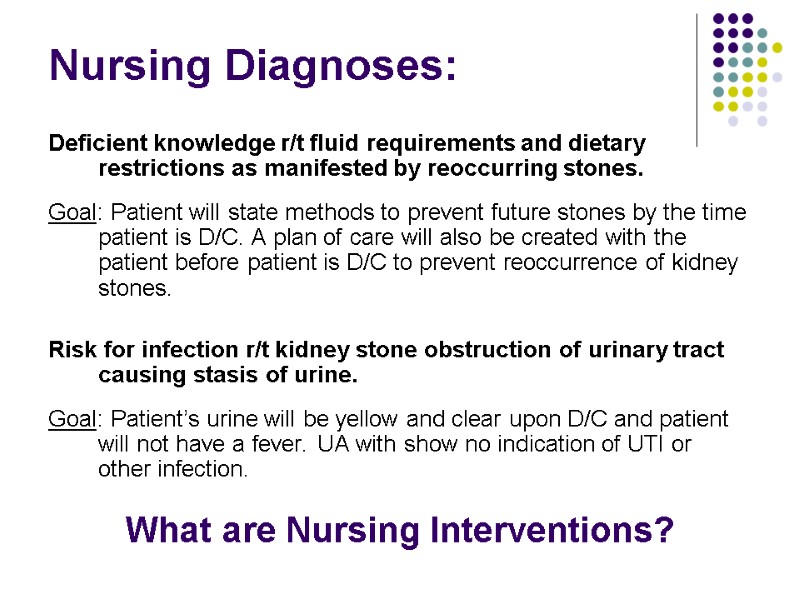
Nursing Diagnoses: Deficient knowledge r/t fluid requirements and dietary restrictions as manifested by reoccurring stones. Goal: Patient will state methods to prevent future stones by the time patient is D/C. A plan of care will also be created with the patient before patient is D/C to prevent reoccurrence of kidney stones. Risk for infection r/t kidney stone obstruction of urinary tract causing stasis of urine. Goal: Patient’s urine will be yellow and clear upon D/C and patient will not have a fever. UA with show no indication of UTI or other infection. What are Nursing Interventions?
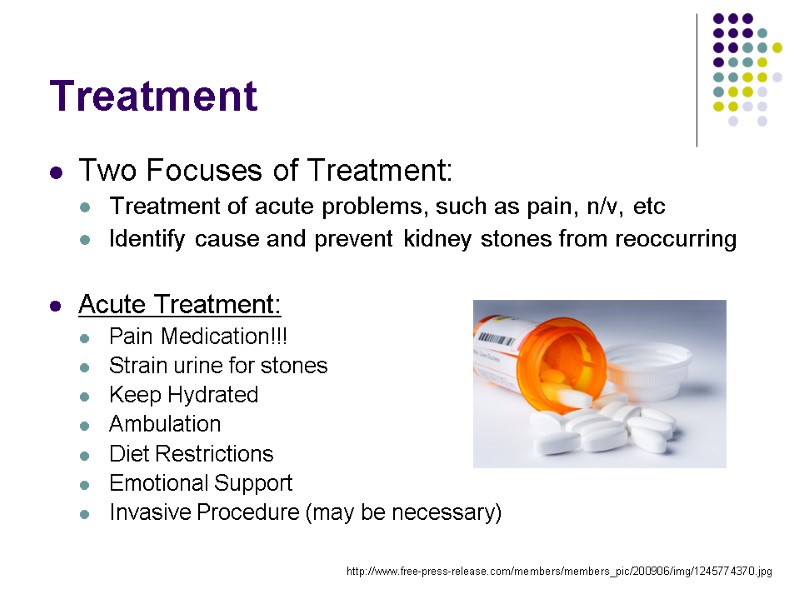
Treatment Two Focuses of Treatment: Treatment of acute problems, such as pain, n/v, etc Identify cause and prevent kidney stones from reoccurring Acute Treatment: Pain Medication!!! Strain urine for stones Keep Hydrated Ambulation Diet Restrictions Emotional Support Invasive Procedure (may be necessary) http://www.free-press-release.com/members/members_pic/200906/img/1245774370.jpg
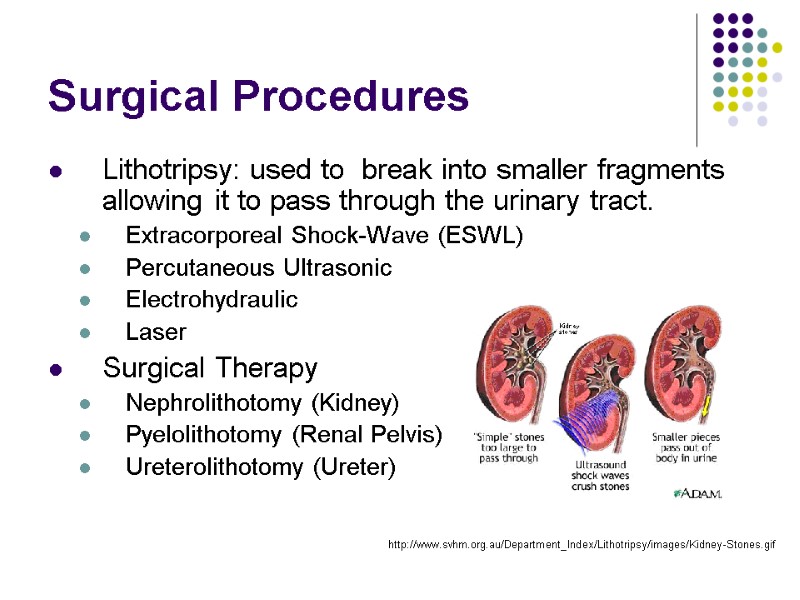
Surgical Procedures Lithotripsy: used to break into smaller fragments allowing it to pass through the urinary tract. Extracorporeal Shock-Wave (ESWL) Percutaneous Ultrasonic Electrohydraulic Laser Surgical Therapy Nephrolithotomy (Kidney) Pyelolithotomy (Renal Pelvis) Ureterolithotomy (Ureter) http://www.svhm.org.au/Department_Index/Lithotripsy/images/Kidney-Stones.gif
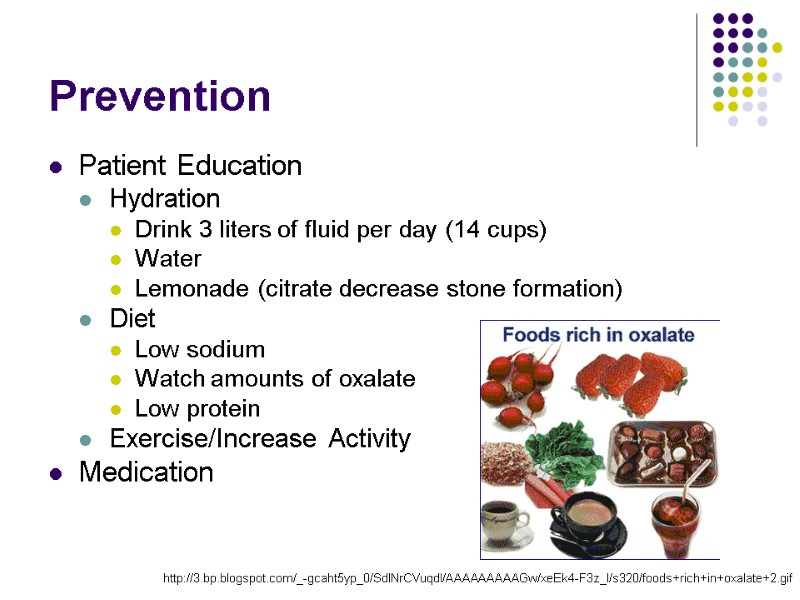
Prevention Patient Education Hydration Drink 3 liters of fluid per day (14 cups) Water Lemonade (citrate decrease stone formation) Diet Low sodium Watch amounts of oxalate Low protein Exercise/Increase Activity Medication http://3.bp.blogspot.com/_-gcaht5yp_0/SdINrCVuqdI/AAAAAAAAAGw/xeEk4-F3z_I/s320/foods+rich+in+oxalate+2.gif
7748-kidney-stone.ppt
- Количество слайдов: 22

